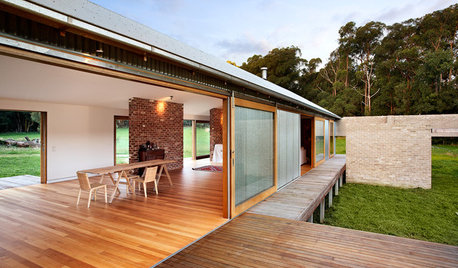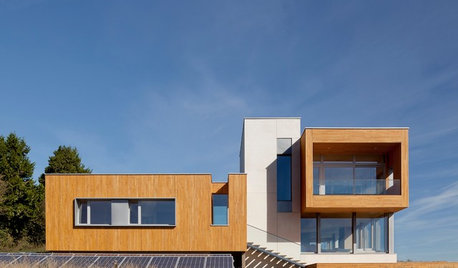The question is best answered by using an example, but first some formulas:
Watts=amps*volts
1 KWH = 3,413 BTU
1500W electric heater produces 5120BTU
Propane is 91,600BTU/gallon
Q=deltaT*A/R Q=BTU heat requirement per hour
delta T is the difference between outside temp and desired inside temp
A= the surface are of the greenhouse is square feet, not including the floor; ie, the roof, side walls, and end walls
R= the R value of the glazing
Two important points about this last formula...some heating calculators use "heat loss value" (HLV) instead of R-value. Don't get confused, the HLV is just 1/R. The formula using heat loss value is then Q=deltaT*A*HLV. The other important point is that you use a different temperature when calculating your average energy costs over a month than you do when you you calculate what size heater you need. Heater calculations are used to determine how much heat you will need on the coldest night of the year. For this, you use your coldest winter temps, for example the colder end of your zone. For calculating heating costs you need the average temperature for the month.
Here are some typical R-values for common glazings or coverings: 4 mil polyethylene 0.83; 4 mm (5/32") twinwall polycarbonate 1.43; 6 mil polyethylene 0.87; 6 mm (1/4") twinwall polycarbonate 1.54; 6 mil poly double layer (inflated) 1.43; 11 mil woven polyethylene 0.95; 3 mm (1/8") glass (single layer) 0.88; 16 mm (5/8") triplewall polycarbonate 2.5; Polycarbonate/fiberglass (single layer) 0.83
OK, let's say we are contemplating an ACF 10 x 12 Cottage Greenhouse. We first need to calculate the surface area of the greenhouse. Using the diminsions found on the website and some simple geometry, we calculate the surface area of each sidewall to be 55 sq ft, each roof side to be 64.6 sq ft, and each end wall to be 75 sq ft. Therefore the total area (A) is sq ft is (55*2)+(64.6*2)+(75*2)=389.2 sq ft.
The website tells us that this GH comes in 6mm twinwall polycarbonate, so the R-value is 1.54. A quick search shows that in this particular zone 7a, the average January temperature to be 28.4 degrees. We want to keep our greenhouse at 50 degrees. So the "delta T" is 50-28.4=21.6 degrees. Now we can calculate the BTU per hour necessary to heat the greenhouse in January. Q=deltaT*A/R. Substituting the numbers, Q=389.2*21.6/1.54=5459 BTU. To figure daily use, multiply by 24 hours to get 131016 BTU/day. To figure monthly use, multiply again by 30 (days in the month) to get 3,930,480 BTU/month.
Now, lets say we heat with propane. Knowing the BTU in a gallon of propane, we can take our BTU/month and divide by the number of BTU in a gallon of propane. 3,930,480/91,600BTU/gal propane to get 42.9 gallons of propane we would expect to burn in January. We just bought propane at $1.69/gal, so this would mean my January cost would be 42.6*$1.69=$72.52/month.
Let's say we heat with electric. Take the same BTU value and instead of dividing by the BTU/gallon of propane, divide by BTU/KWH. 3,930,480/3413BTU per KWH=1151KWH. If my energy cost is 7.169cents/KWH, then heating electric should cost about $82.52 for the month of January.
OK, well, our hypothetical DW says that the winter costs are too high and she cannot be convinced to go ahead with the greenhouse. Let's look at what we can do to lower the winter costs.
Let's insulate the north wall...no sun comes through this wall, and if we insulate it with foil-backed polyisocyanurate 1" board, which has an R-value of 7.04, we raise the R-value of the north wall to 1.54+7.04=8.58.
We can recalculate Q using the same formula, but adding together the BTU lost through the north wall and the BTU lost through the rest of the greenhouse. The formula would be Q=(deltaT*A/R)+(deltaT*A/R). Our greenhouse is oriented north-south, so the north wall is an end wall with a square footage of 55 sq ft. Our BTU formula changes:
Q = (334.2*21.6/1.54) + (55*21.6/8.58) = 4826 BTU/hour
This equals a monthly use of 3,474,720 BTU, equal to about $72.99/month heating electric.
What else could we do? Well, we could add some thermal mass. Let's put 8 black 55 gallon drums in the greenhouse. One BTU is defined as the amount of heat required to raise one pound of water one degree F. The water will warm during the day and release this heat at night. One chap we know has measured the temperatures of his water at dawn and at dusk. The temp is 74F at dusk and 66F in the morning, a drop of 8F.
Eight 55 gallon drums hold 440 gallons of water which is 3520 pounds of water. A 1F drop in the water temp releases 3520 BTU. An 8F drop releases 28120 BTU overnight. Over the course of a month, this is 844,800 BTU. Therefore, the total monthly BTU could hypothetically drop further to 3,474,720-844,800=2,629,920 BTU. This is 770.55KWH heating electric. At $0.07169/KWH, this is $55.24 for the month of January.
Our calculations assume 100% efficiency. Some heaters, particularly vented heaters, are not 100% efficient. If you know the efficiency of your heater, you can adjust the calculations accordingly!
Now on to summer costs. The greenhouse in the example will need an exhaust fan and HAF fans. First the exhaust fan. The greenhouse is 900 cubic feet in volume. Therefore, we need an exhaust fan that is rated at least 900 cfm. A 16" exhaust fan at Charley's is rated at 1095 cfm. The website tells me it draws 1.8 amps. Remember that watts=amps*volts. So when it is on, the fan uses 1.8*120=216 watts. If this fan runs 16 hours per day in the summer, it will use 216*16=3.456KWH/day. This is 103.68KWH/month, which, at the same price of energy we have been using above, amounts to $7.43/month for the exhaust fan.
Let's say we use two 8" long life HAF fans. This may be overkill for a greenhouse of this size, but you will get the idea. Each fan draws 0.6 amps, and at 120V, this is 72 watts. Running 24 hours a day, each fan uses 1.728KWH/day, or 51.84KWH/month. Total use with the two fans is again 103.68KWH/month or $7.43/month.
Know the usage pattern and amperage draw of each electrical appliance in the greenhouse allows us to calculate the cost of running each item.
Information provided by: Stressbaby













Related Discussions
My ideas for a house that consumes no energy to heat or cool
Q
Up front costs of Geothermal heat pump vs. other heating methods
Q
Calculating cost-effectiveness of geothermal vs. propane boiler
Q
Which is the best heating and cooling option for me?
Q